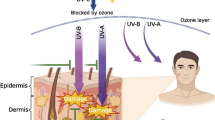Abstract
The human visual system maintains the perception of colors of an object across various light sources. Similarly, current digital cameras feature an auto white balance function, which estimates the illuminant color and corrects the color of a photograph as if the photograph was taken under a certain light source. The main subject in a photograph is often a person’s face, which could be used to estimate the illuminant color. However, such estimation is adversely affected by differences in facial colors among individuals. The present paper proposes an auto white balance algorithm based on a pigmentation separation method that separates the human skin color image into the components of melanin, hemoglobin and shading. Pigment densities have a uniform property within the same race that can be calculated from the components of melanin and hemoglobin in the face. We, thus, propose a method that uses the subject’s facial color in an image and is unaffected by individual differences in facial color among Japanese people.













Similar content being viewed by others
References
Foster, D.H.: Color constancy. Vision. Res. 51, 674–700 (2011)
Gijsenij, A., Gevers, T., Van De Weijer, J.: Computational color constancy: survey and experiments. Image Process IEEE Trans 20, 2475–2489 (2011)
Buchsbaum, G.: A spatial processor model for object colour perception. J. Franklin Inst. 310, 1–26 (1980)
Land, E.H.: The retinex theory of color vision. Sci Am 237(6), 108–128 (1977)
Lee, H.-C.: Method for computing the scene-illuminant chromaticity from specular highlights. JOSA A 3, 1694–1699 (1986)
Tsukada M., Funayama C., Tajima J.: Automatic color preference correction for color reproduction. In: Photonics West 2001-Electronic Imaging, pp. 216–223 (2000)
Tsumura, N., Haneishi, H., Miyake, Y.: Independent-component analysis of skin color image. JOSA A 16, 2169–2176 (1999)
Tsumura N., Ojima N., Nakaguchi T., Miyake Y. (eds.): Skin Color Separation and Synthesis for E-Cosmetics. In: Signal Processing Techniques for Knowledge Extraction and Information Fusion, pp. 201–220. Springer, Berlin (2008)
Tsumura, N., Ojima, N., Sato, K., Shiraishi, M., Shimizu, H., Nabeshima, H., et al.: Image-based skin color and texture analysis/synthesis by extracting hemoglobin and melanin information in the skin. ACM Trans Gr (TOG) 22, 770–779 (2003)
Finlayson, G.D., Drew, M.S., Funt, B.V.: Color constancy: generalized diagonal transforms suffice. JOSA A 11, 3011–3019 (1994)
Funt, B.V., Lewis, B.C.: Diagonal versus affine transformations for color correction. JOSA A 17, 2108–2112 (2000)
Von Kries J.: Sources of color science, Chromatic adaptation, pp. 109–119 (1970)
West, G., Brill, M.H.: Necessary and sufficient conditions for von Kries chromatic adaptation to give color constancy. J. Math. Biol. 15, 249–258 (1982)
Klinker, G.J., Shafer, S.A., Kanade, T.: A physical approach to color image understanding. Int. J. Comput. Vision 4, 7–38 (1990)
Shafer, S.A.: Using color to separate reflection components. Color Res Appl 10, 210–218 (1985)
Igarashi T., Nishino K., Nayar S. K.: The appearance of human skin: a survey, In: Foundations and Trends® in Computer Graphics and Vision, vol. 3, pp. 1–95 (2007)
Van Gemert, M., Jacques, S.L., Sterenborg, H., Star, W.: Skin optics. Biomed. Eng. IEEE Trans. 36, 1146–1154 (1989)
Hiraoka, M., Firbank, M., Essenpreis, M., Cope, M., Arridge, S., Van Der Zee, P., et al.: A Monte Carlo investigation of optical pathlength in inhomogeneous tissue and its application to near-infrared spectroscopy. Phys. Med. Biol. 38, 1859 (1993)
Anderson, R.R., Parrish, J.A.: The optics of human skin. J. Investig Dermatol 77, 13–19 (1981)
Drew M. S., Chen C., Hordley S. D., Finlayson G. D.: Sensor transforms for invariant image enhancement. In: Color and Imaging Conference, pp. 325–330 (2002)
Author information
Authors and Affiliations
Corresponding author
Rights and permissions
About this article
Cite this article
Tanaka, S., Kakinuma, A., Kamijo, N. et al. Auto white balance method using a pigmentation separation technique for human skin color. Opt Rev 24, 17–26 (2017). https://doi.org/10.1007/s10043-016-0290-y
Received:
Accepted:
Published:
Issue Date:
DOI: https://doi.org/10.1007/s10043-016-0290-y




